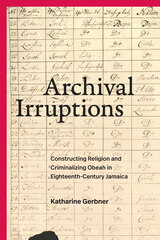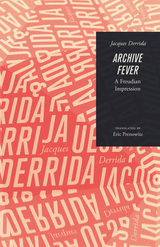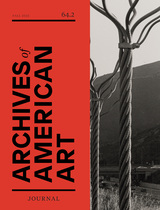3 books about Riley, Ann L.
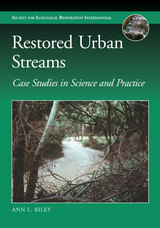
Restored Urban Streams
Case Studies in Science and Practice
Ann L. Riley
Island Press, 2015
Thirty years ago, the best thinking on urban stream management prescribed cement as the solution to flooding and other problems of people and flowing water forced into close proximity. Urban streams were perceived as little more than flood control devices designed to hurry water through cities and neighborhoods with scant thought for aesthetics or ecological considerations. Stream restoration pioneers like hydrologist Ann Riley thought differently. She and other like-minded field scientists imagined that by restoring ecological function and with careful management, streams and rivers could be a net benefit to cities instead of a net liability. In the intervening decades, she has spearheaded numerous urban stream restoration projects and put to rest the long-held misconception that degraded urban streams are beyond help.
What has been missing, however, has been detailed guidance for restoration practitioners wanting to undertake similar urban stream restoration projects that worked with, rather than against, nature. This book presents the author’s thirty years of practical experience managing long-term stream and river restoration projects in heavily degraded urban environments. Riley provides a level of detail only a hands-on design practitioner would know, including insights on project design, institutional and social context of successful projects, and how to avoid costly and time-consuming mistakes. Early chapters clarify terminology and review strategies and techniques from historical schools of restoration thinking. But the heart of the book is the chapters containing nine case studies of long-term stream restoration projects in northern California. Although the stories are local, the principles, methods, and tools are universal, and can be applied in almost any city in the world.
Restoration practitioners, consultants, agency personnel, and students in applied restoration courses can learn from Riley’s succinct tour of restoration basics and powerful case studies, and apply them successfully in their own towns and cities.
What has been missing, however, has been detailed guidance for restoration practitioners wanting to undertake similar urban stream restoration projects that worked with, rather than against, nature. This book presents the author’s thirty years of practical experience managing long-term stream and river restoration projects in heavily degraded urban environments. Riley provides a level of detail only a hands-on design practitioner would know, including insights on project design, institutional and social context of successful projects, and how to avoid costly and time-consuming mistakes. Early chapters clarify terminology and review strategies and techniques from historical schools of restoration thinking. But the heart of the book is the chapters containing nine case studies of long-term stream restoration projects in northern California. Although the stories are local, the principles, methods, and tools are universal, and can be applied in almost any city in the world.
Restoration practitioners, consultants, agency personnel, and students in applied restoration courses can learn from Riley’s succinct tour of restoration basics and powerful case studies, and apply them successfully in their own towns and cities.
[more]
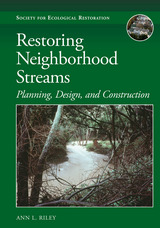
Restoring Neighborhood Streams
Planning, Design, and Construction
Ann L. Riley
Island Press, 2016
Thirty years ago, the best thinking on urban stream management prescribed cement as the solution to flooding and other problems of people and flowing water forced into close proximity. Urban streams were perceived as little more than flood control devices designed to hurry water through cities and neighborhoods with scant thought for aesthetics or ecological considerations. Stream restoration pioneers like hydrologist Ann Riley thought differently. She and other like-minded field scientists imagined that by restoring ecological function, and with careful management, streams and rivers could be a net benefit to cities, instead of a net liability. In the intervening decades, she has spearheaded numerous urban stream restoration projects and put to rest the long-held misconception that degraded urban streams are beyond help.
What has been missing, however, is detailed guidance for restoration practitioners wanting to undertake similar urban stream restoration projects that worked with, rather than against, nature. This book presents the author’s thirty years of practical experience managing long-term stream and river restoration projects in heavily degraded urban environments. Riley provides a level of detail only a hands-on design practitioner would know, including insights on project design, institutional and social context of successful projects, and how to avoid costly and time-consuming mistakes. Early chapters clarify terminology and review strategies and techniques from historical schools of restoration thinking. But the heart of the book comprises the chapters containing nine case studies of long-term stream restoration projects in northern California. Although the stories are local, the principles, methods, and tools are universal, and can be applied in almost any city in the world.
What has been missing, however, is detailed guidance for restoration practitioners wanting to undertake similar urban stream restoration projects that worked with, rather than against, nature. This book presents the author’s thirty years of practical experience managing long-term stream and river restoration projects in heavily degraded urban environments. Riley provides a level of detail only a hands-on design practitioner would know, including insights on project design, institutional and social context of successful projects, and how to avoid costly and time-consuming mistakes. Early chapters clarify terminology and review strategies and techniques from historical schools of restoration thinking. But the heart of the book comprises the chapters containing nine case studies of long-term stream restoration projects in northern California. Although the stories are local, the principles, methods, and tools are universal, and can be applied in almost any city in the world.
[more]
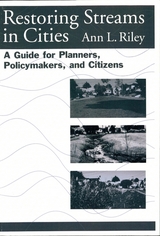
Restoring Streams in Cities
A Guide for Planners, Policymakers, and Citizens
Ann L. Riley
Island Press, 1998
Restoring Streams in Cities equips readers with the tools to transform degraded urban waterways into vibrant ecological and community assets—without relying on costly, destructive infrastructure. Whether you're a planner, engineer, advocate, or homeowner, this book rewards you with a smarter, more sustainable way to address flooding, erosion, and stream degradation.
Instead of outdated methods that bury or channelize streams, Ann L. Riley offers a proven alternative: working with natural systems to restore ecological balance while protecting people and property. You’ll gain practical strategies rooted in watershed-level thinking, land-use planning, site design, and gentle channel restoration—approaches that repair damage and prevent future problems.
The benefit? You’ll walk away with the confidence to initiate or support restoration projects in your own community. The book provides essential background to ask the right questions, hire the right help, and guide smart decision-making. You'll also learn how to access funding and navigate federal programs.
Rich with real-world examples and over 100 photos, Restoring Streams in Cities is more than a manual—it’s a call to action with a clear path forward. Readers will leave empowered to turn neglected urban streams into living, resilient systems that protect communities, restore nature, and enhance quality of life.
Instead of outdated methods that bury or channelize streams, Ann L. Riley offers a proven alternative: working with natural systems to restore ecological balance while protecting people and property. You’ll gain practical strategies rooted in watershed-level thinking, land-use planning, site design, and gentle channel restoration—approaches that repair damage and prevent future problems.
The benefit? You’ll walk away with the confidence to initiate or support restoration projects in your own community. The book provides essential background to ask the right questions, hire the right help, and guide smart decision-making. You'll also learn how to access funding and navigate federal programs.
Rich with real-world examples and over 100 photos, Restoring Streams in Cities is more than a manual—it’s a call to action with a clear path forward. Readers will leave empowered to turn neglected urban streams into living, resilient systems that protect communities, restore nature, and enhance quality of life.
[more]
READERS
Browse our collection.
PUBLISHERS
See BiblioVault's publisher services.
STUDENT SERVICES
Files for college accessibility offices.
UChicago Accessibility Resources
home | accessibility | search | about | contact us
BiblioVault ® 2001 - 2025
The University of Chicago Press


